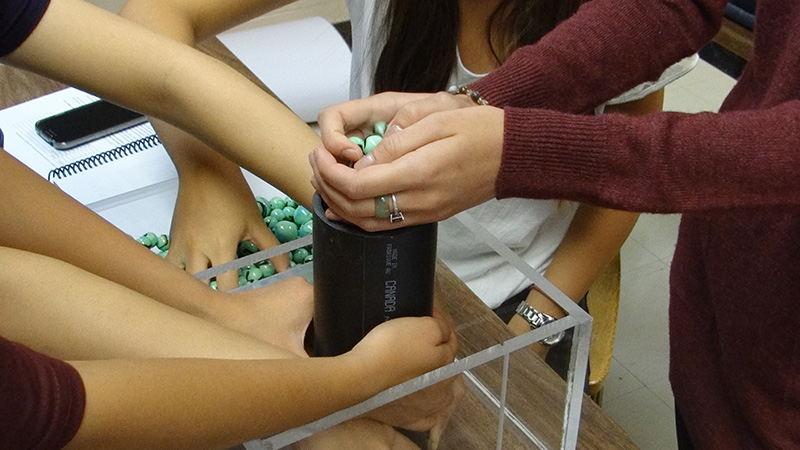
Teamwork is an important aspect of real-world engineering, and if the model activities are suitably structured, students can learn how to run a successful collaboration. They can learn even more if they read about the advantages and challenges of teamwork (as in this document) or hear a short lecture on that topic. In particular, it is helpful if students understand why teams can be more effective when they are built with people who bring differing viewpoints and skills, why this diversity gives rise to conflict and effective tools for conflict management.
| Activity | Downloadables |
|---|---|
Basics of Teamwork: Its Advantages and Challenges |
Downloadable Documents |
Two of the keys to running a successful team are:
- A clear understanding of which person is responsible for each task and
- A pre-defined timeline so that work is completed in a timely manner and so that tasks that rely on previous steps are not unduly prevented from moving forward.
Ideally, responsibilities should be assigned and a timeline reflecting major task interdependencies established before a project is underway, and this information should be documented in writing.
When a framework document of this kind binds multiple independent parties, such as different companies or government agencies (or in the case of a student project, multiple students) the document is called a “contract”, and in the business world, it is usually legally binding.
To help students learn how to structure and operate successful teams, sample “contracts” are provided for them (see below). Students are encouraged to complete the contracts before they start the model activity, listing how the project responsibilities (such as data collection and report writing) will be divided among team members, and working out a suitable timeline (using a simple Gantt chart).
Two different “contracts” are shown in the table below, and each is tailored to the complexity of the activity it was designed to support. Ideally, students would carry out a series of graduated activities and use increasingly complex associated “contracts”.